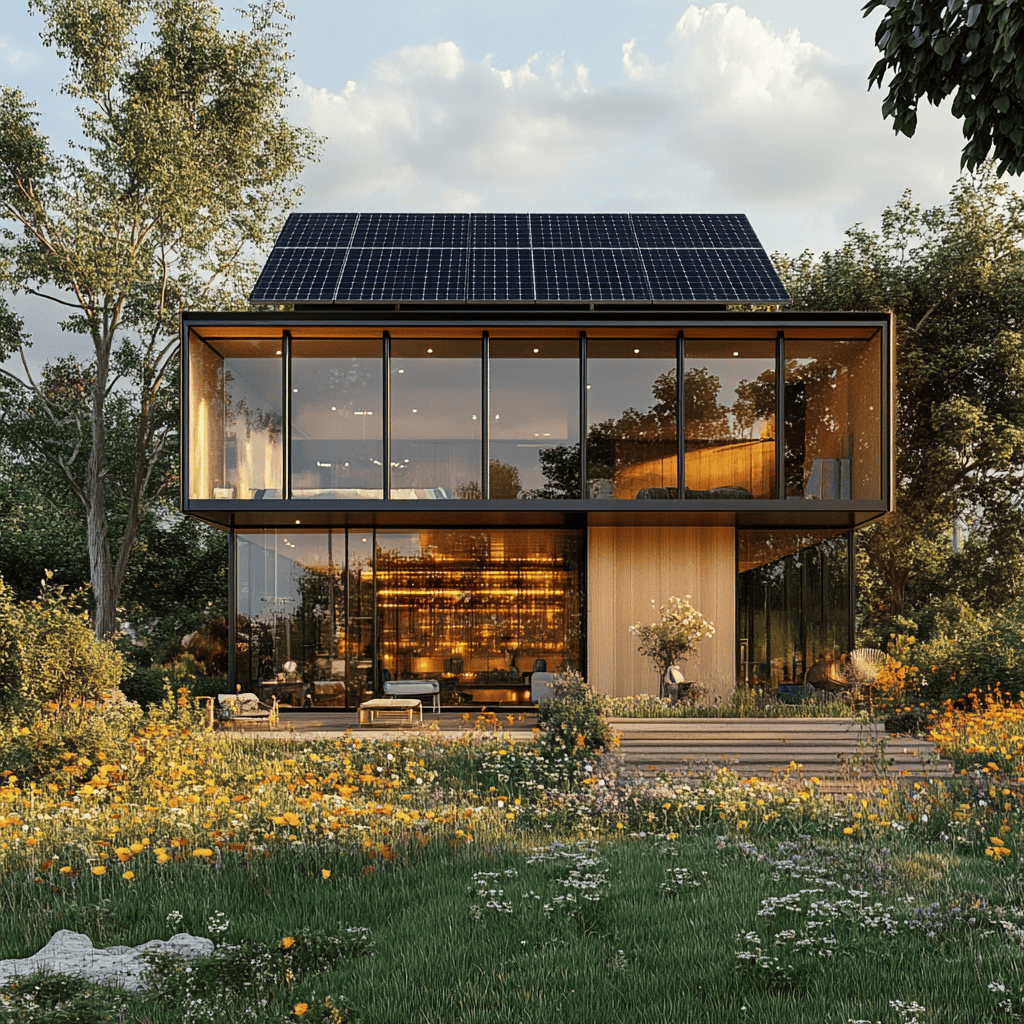Table of Contents
How to Choose the Best Solar Panels for Your Home
Switching to solar power is a big step toward reducing your energy bills and environmental footprint. One of the most important decisions in this process is choosing the right solar panels for your home. With several types of panels on the market, such as monocrystalline, polycrystalline, and thin-film, understanding their differences is essential to make an informed decision. This guide will help you compare these options and consider key factors like efficiency, cost, and durability.
Types of Solar Panels
1. Monocrystalline Solar Panels
Monocrystalline panels are made from a single, pure crystal of silicon, giving them a uniform dark appearance. They are known for their high efficiency and sleek design.
- Efficiency: Monocrystalline panels are the most efficient, with rates typically between 20% and 22%. This makes them ideal for homes with limited roof space.
- Cost: They are also the most expensive option due to their complex manufacturing process.
- Durability: Monocrystalline panels are highly durable and usually come with warranties of 25 years or more.
Best For: Homeowners who want the most efficient panels and have a higher budget.
2. Polycrystalline Solar Panels
Polycrystalline panels are made from multiple silicon crystals melted together. Their bluish hue and speckled appearance distinguish them from monocrystalline panels.
- Efficiency: Slightly less efficient than monocrystalline, with rates between 15% and 17%.
- Cost: More affordable than monocrystalline panels, making them a popular choice for budget-conscious homeowners.
- Durability: Durable and long-lasting, but slightly less efficient in high-temperature conditions.
Best For: Homeowners looking for a cost-effective solution with decent efficiency.
3. Thin-Film Solar Panels
Thin-film panels are made by depositing layers of photovoltaic material onto a substrate like glass, metal, or plastic. They are lightweight and flexible, making them unique compared to crystalline panels.
- Efficiency: Lower efficiency, usually between 10% and 12%, which means they require more space to produce the same amount of energy.
- Cost: The cheapest option due to simpler manufacturing processes.
- Durability: Thin-film panels degrade faster and may not last as long as crystalline panels. They are less ideal for extreme weather conditions.
Best For: Homeowners with ample roof space or those looking for innovative designs, such as curved or flexible installations.
Factors to Consider When Choosing Solar Panels
Efficiency
Efficiency refers to how well a solar panel converts sunlight into electricity. Higher efficiency panels produce more energy per square foot, which is crucial for homes with limited roof space. While monocrystalline panels are the most efficient, polycrystalline panels still provide good performance for larger roofs.
Cost
Your budget will play a significant role in your choice. Monocrystalline panels are the most expensive but offer the highest efficiency and longevity. Polycrystalline panels are more affordable while maintaining decent efficiency. Thin-film panels are the cheapest but may require more maintenance and replacement over time.
Durability
Durability is vital for long-term savings. Monocrystalline and polycrystalline panels are more robust and can withstand extreme weather conditions, often backed by long warranties. Thin-film panels may need more frequent replacements due to their shorter lifespan.
Aesthetics
The appearance of your solar panels can affect the overall look of your home. Monocrystalline panels have a sleek, uniform look, while polycrystalline panels have a speckled blue appearance. Thin-film panels offer flexibility in design and can blend better with certain architectural styles.
Climate
Consider your local climate when choosing panels. Monocrystalline panels perform better in high-temperature and low-light conditions. Polycrystalline panels are more sensitive to temperature changes, while thin-film panels may be suitable for areas with moderate climates.
Roof Space
If your roof space is limited, high-efficiency monocrystalline panels are the best option since they produce more power per square foot. For larger roofs, polycrystalline panels can be a cost-effective alternative.
Additional Tips for Choosing Solar Panels
- Evaluate Your Energy Needs: Calculate your average energy usage to determine the size and number of panels required.
- Research Warranties: Look for panels with comprehensive warranties to ensure long-term reliability.
- Consider Inverter Compatibility: Ensure the panels are compatible with your chosen inverter for optimal system performance.
- Check Local Incentives: Take advantage of tax credits, rebates, or net metering programs to offset installation costs.

Conclusion
Choosing the best solar panels for your home depends on your specific needs, budget, and priorities. Monocrystalline panels offer the highest efficiency and durability for homeowners seeking premium performance. Polycrystalline panels provide a balance of affordability and efficiency, while thin-film panels are ideal for unique installations or larger spaces. By considering factors like efficiency, cost, and roof space, you can make an informed decision that maximizes your investment in solar energy. With the right panels, you’ll enjoy clean, renewable energy and long-term savings for years to come.
Additional Resources
Learn more about how your house works.

